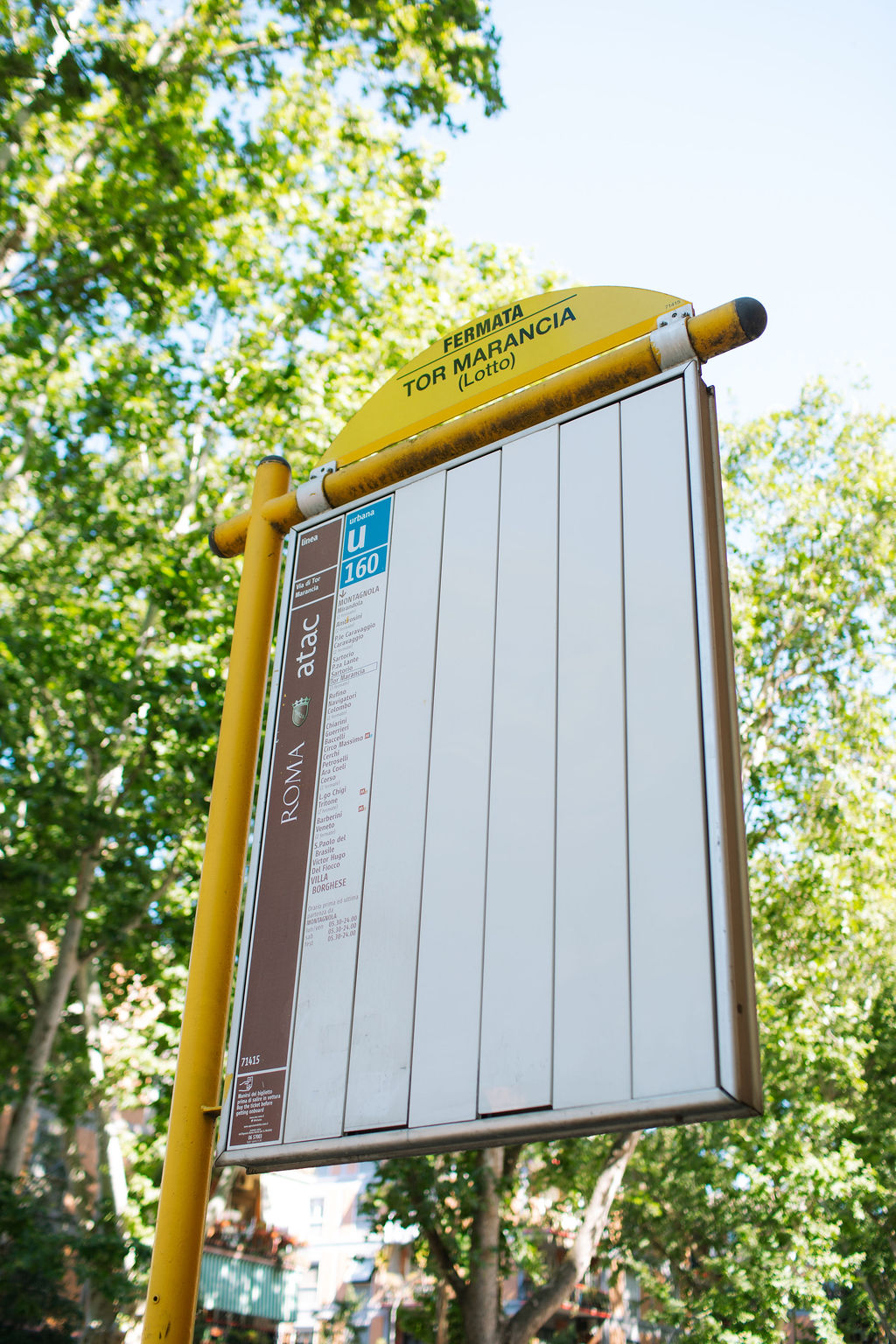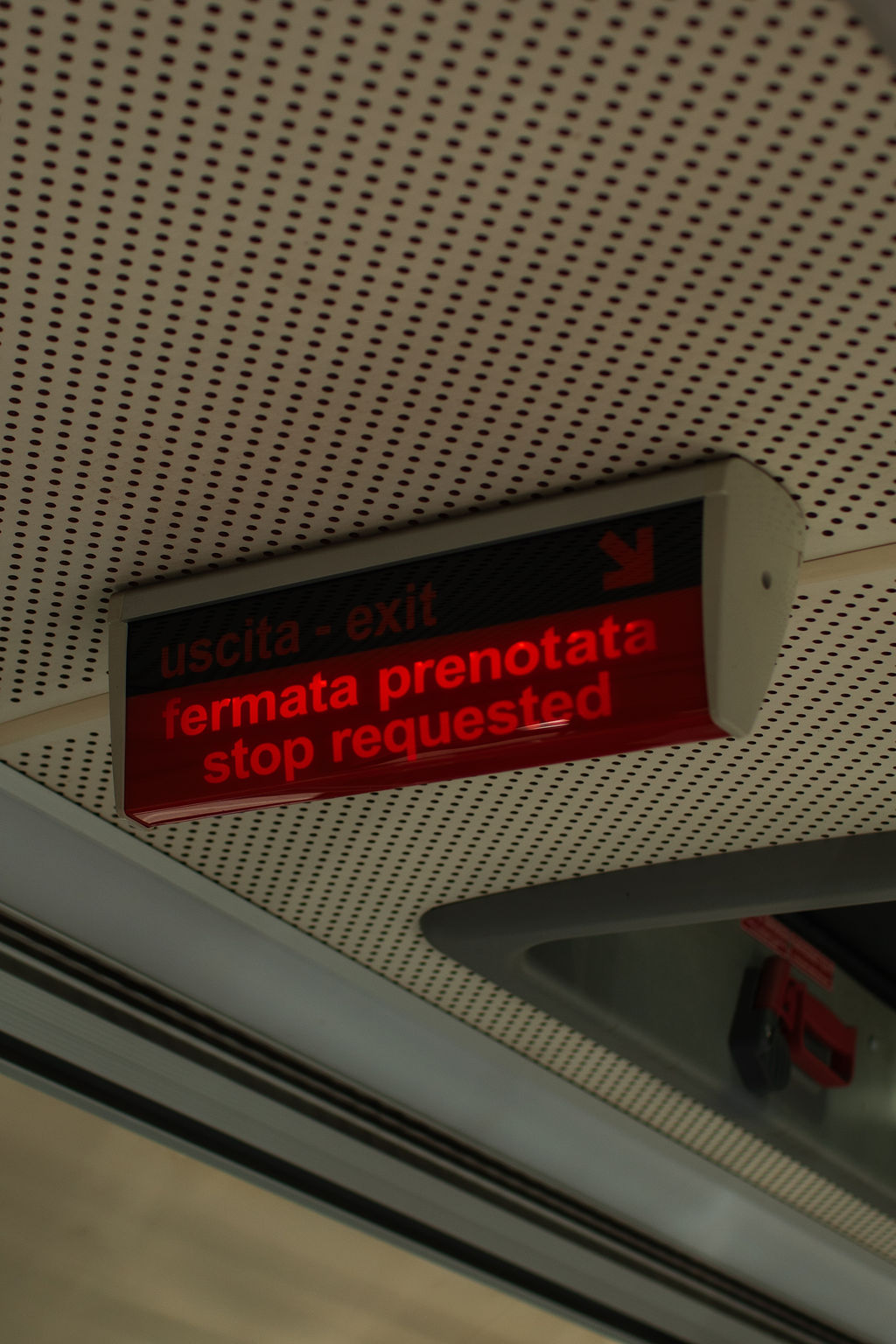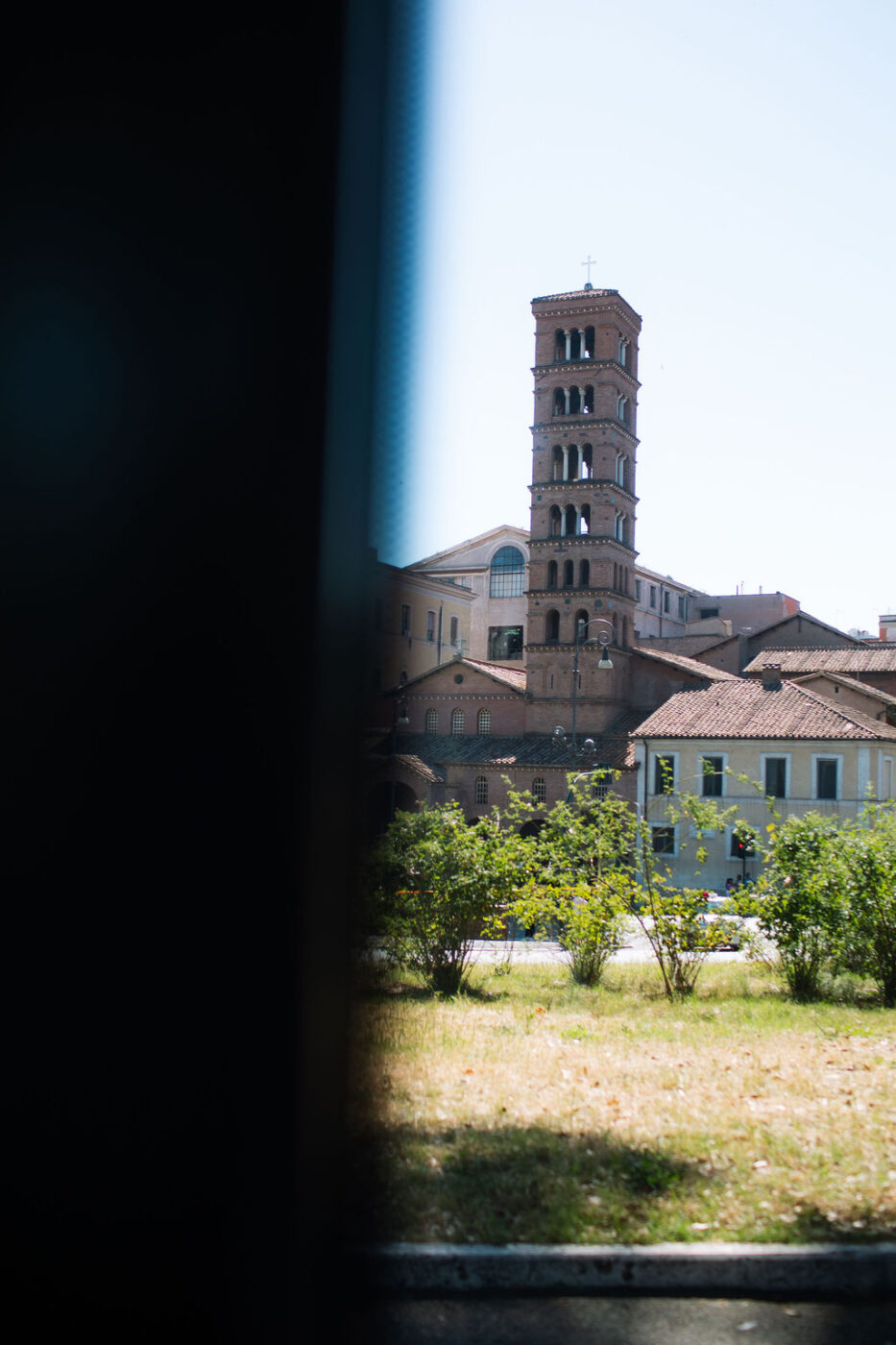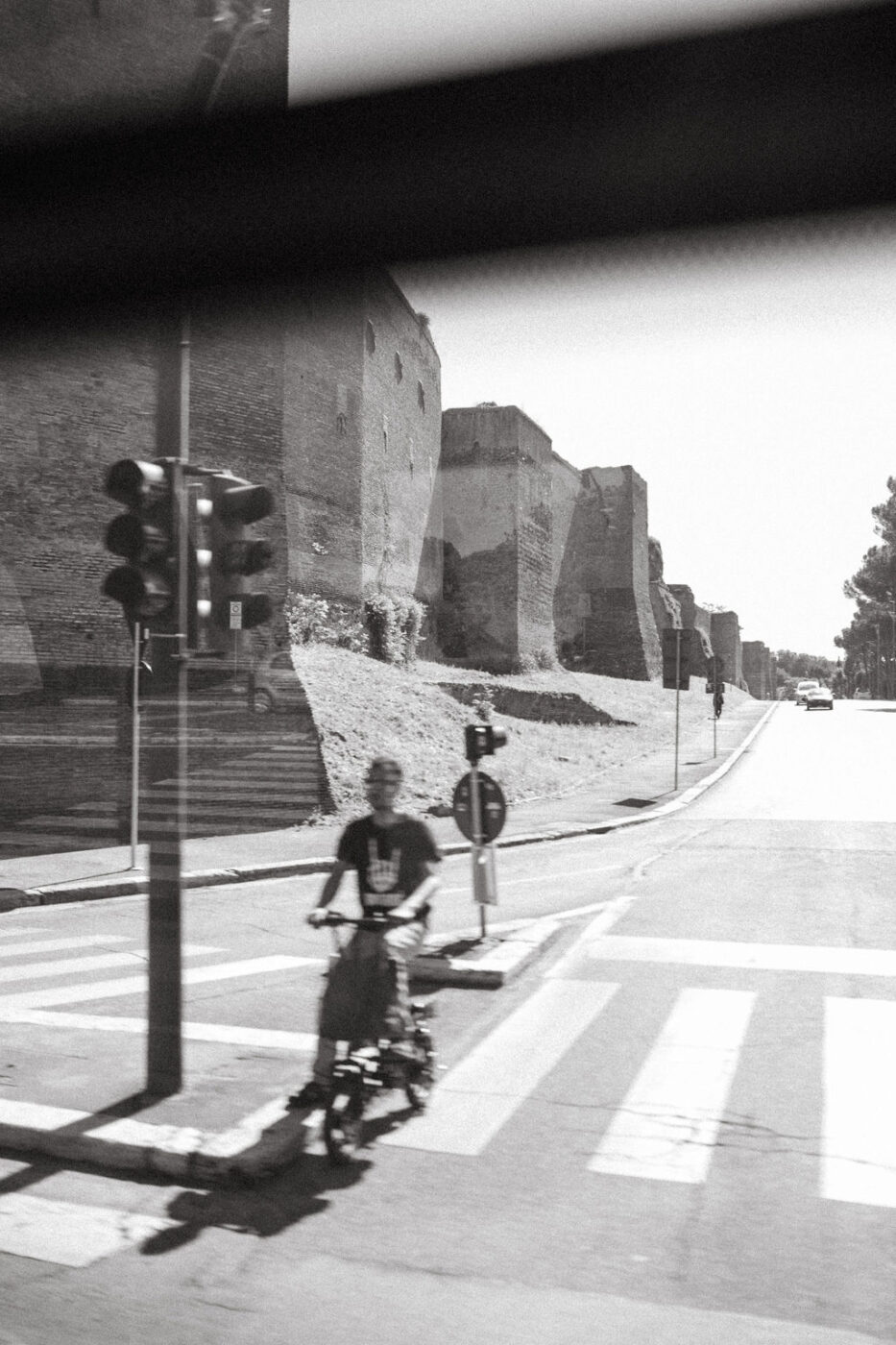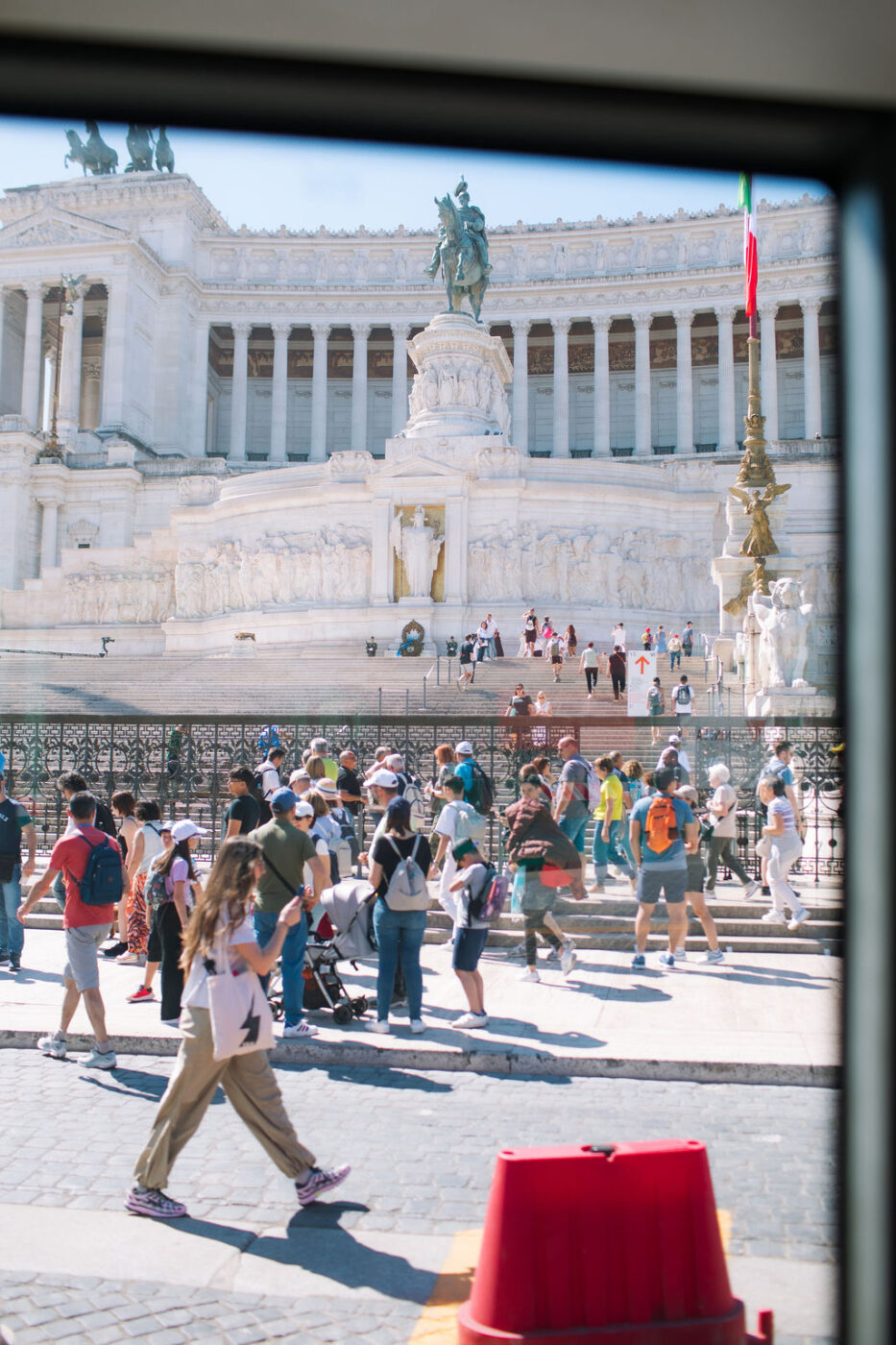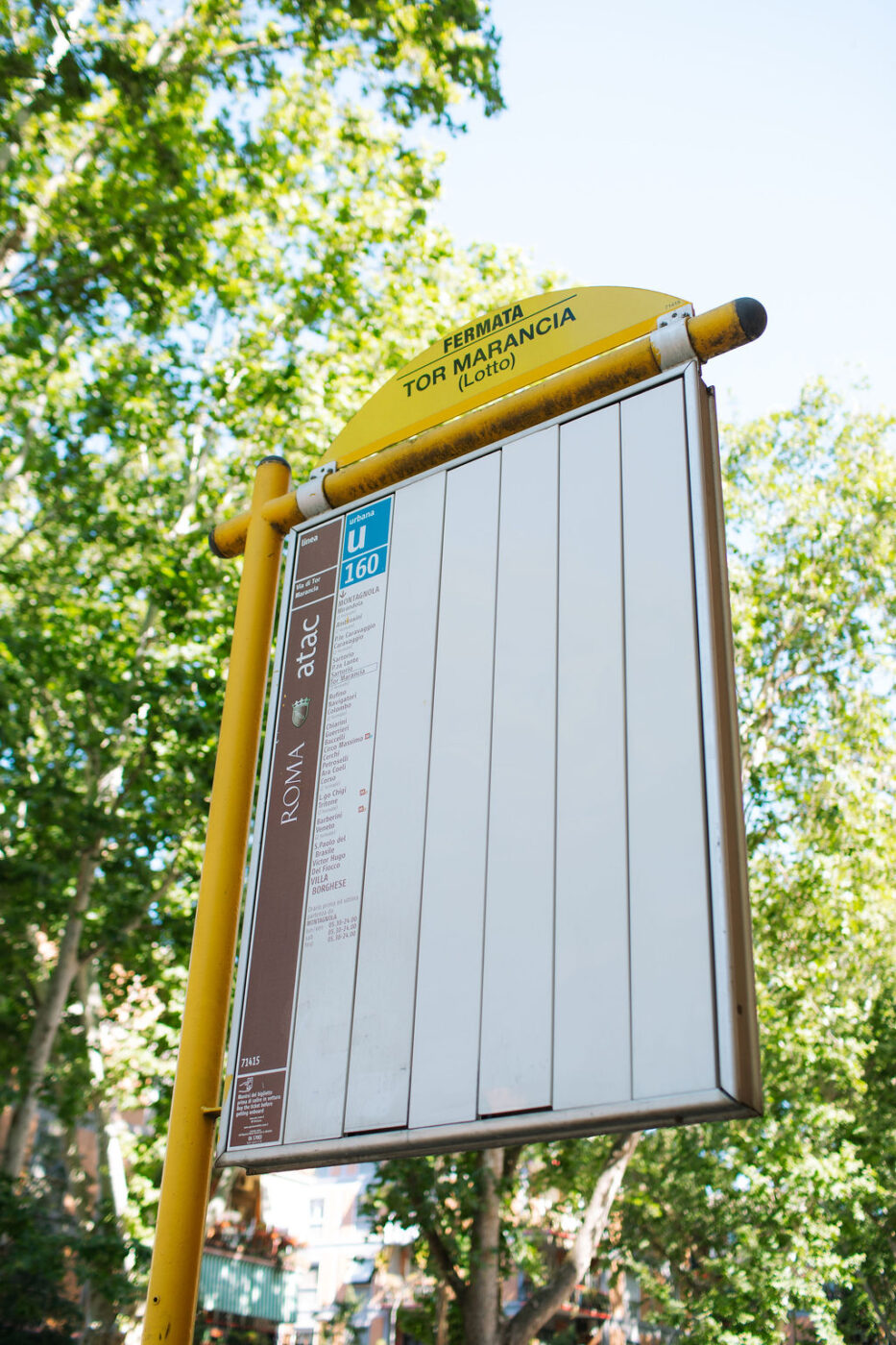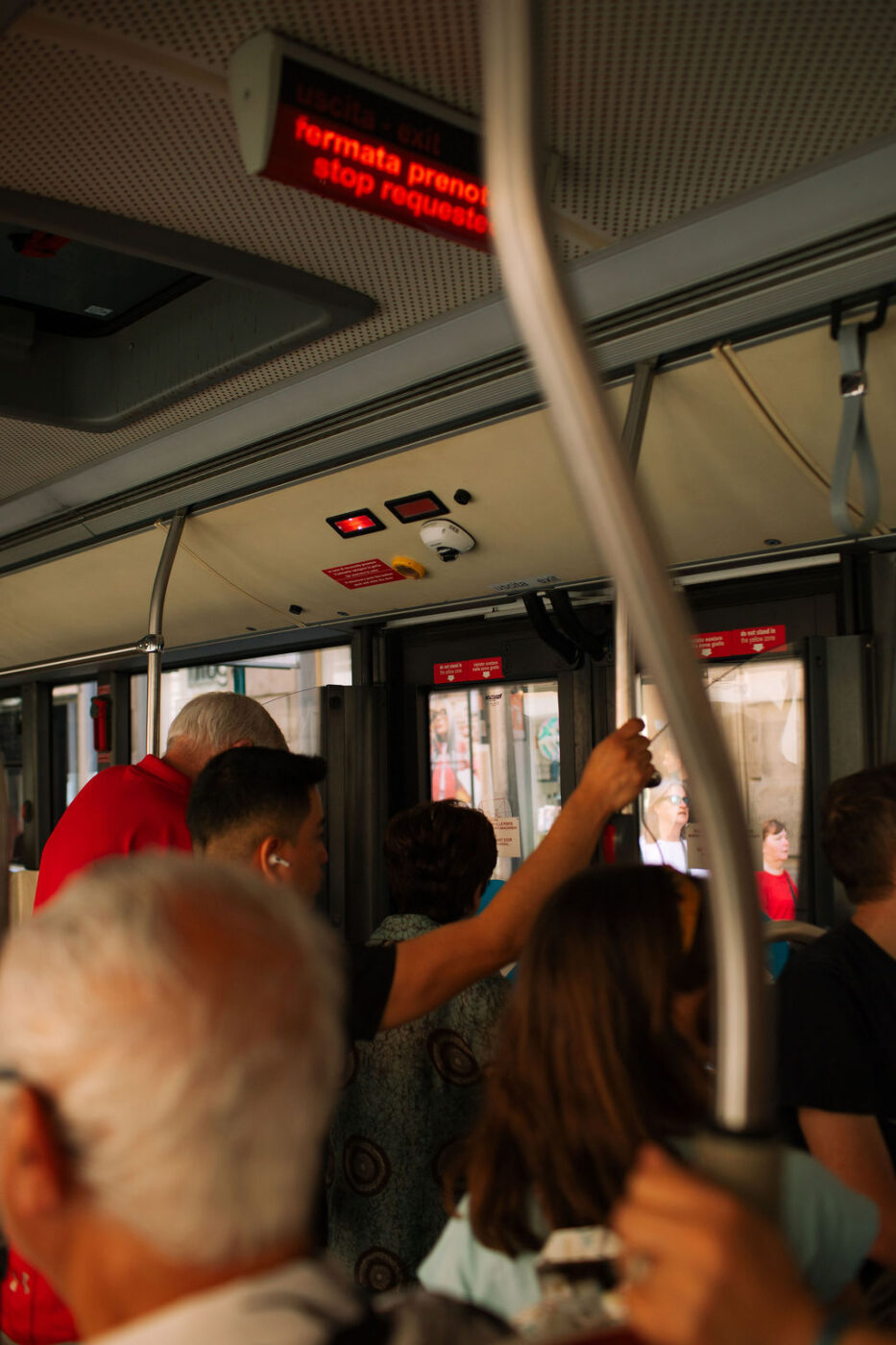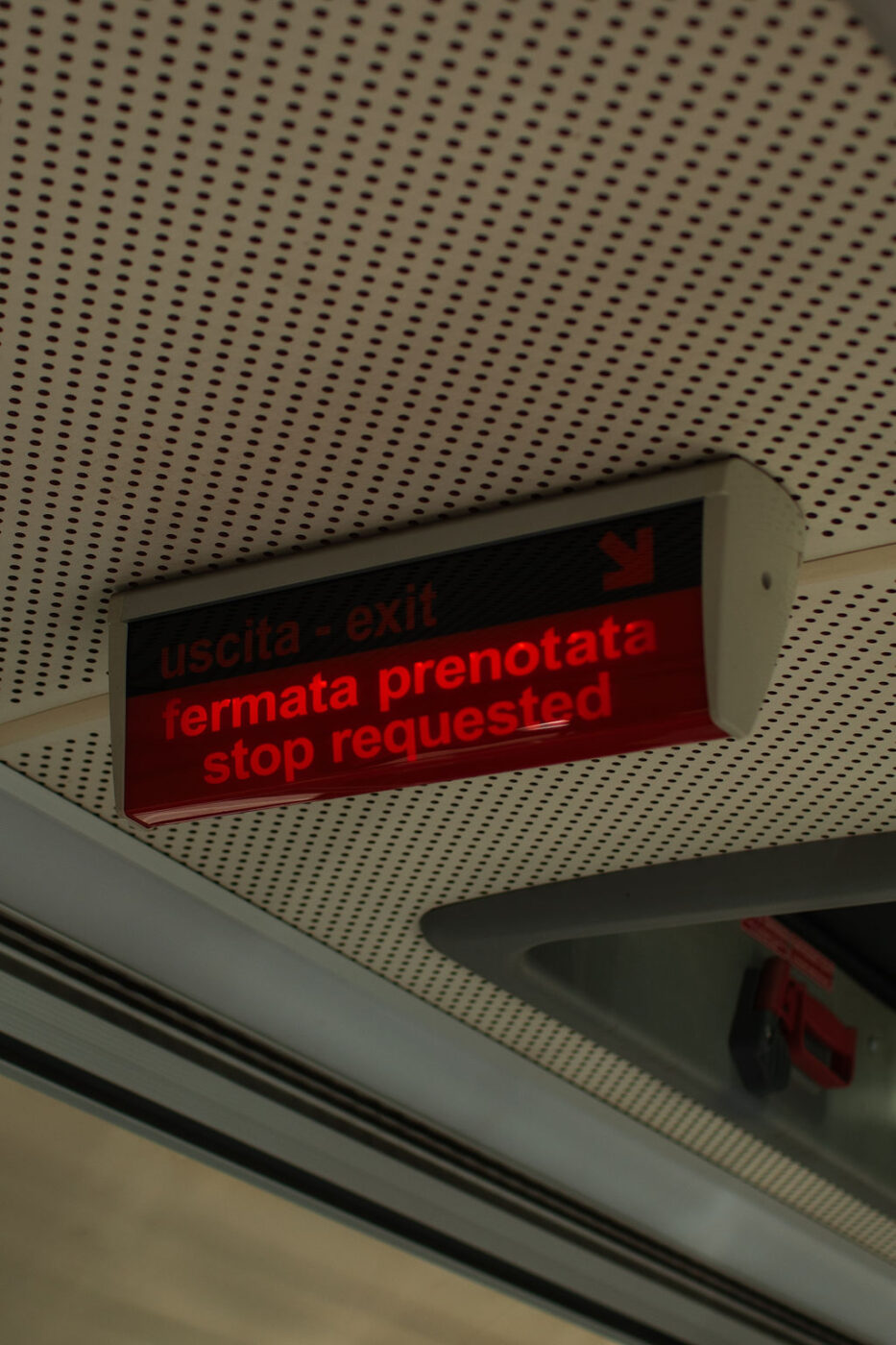The 160 bus route is a Roman time machine—an unofficial tour of the Eternal City, past and present. A budget friendly version of the hop-on-hop-off bus, if you will. On a good day (40% probability), it even arrives on time. Better yet, it’s a Mercedes-Benz Citaro hybrid: German by design, Roman by schedule.
My daily journey begins at Tenuta di Tor Marancia, a suburban side of Roma Sud that caters to young professional families and their au pairs, like me. I stand on the curb and wait in the cold when my crimson knight arrives. It’s 7:20 AM—only seven minutes late today. The bus is empty, as we’re only a few stops into its trip. I snag one of the three elevated solo seats next to the window.
As we cruise, I watch morning bar crews pull out tables and chairs for their regulars. The damp sidewalk gives the neighborhood that movie set effect. On my right, the chiesa where the kids I nanny attend Catecismo classes; on my left, a modern drive-thru car wash. Rome has an act for being two cities at once.
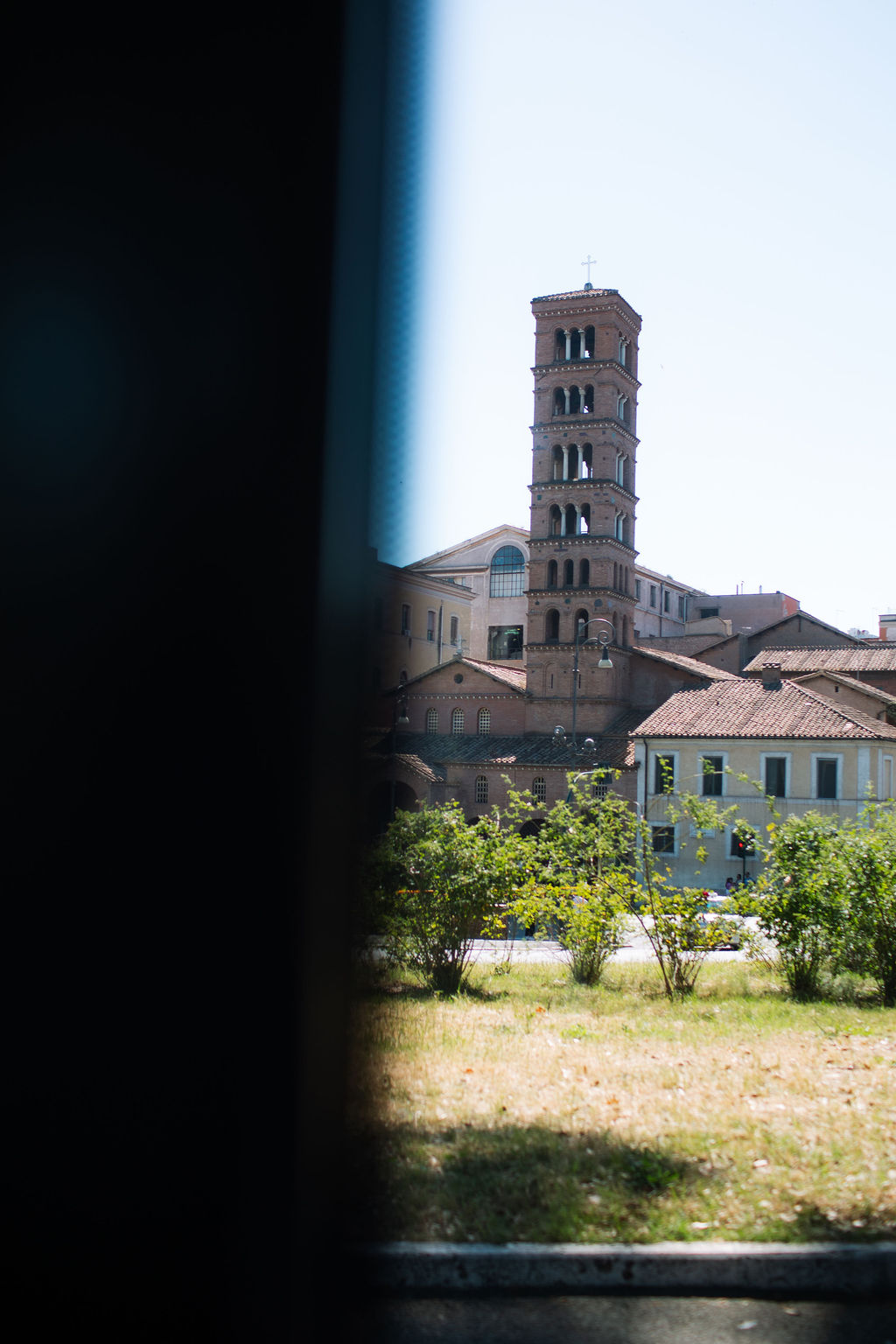
The bocca della verità at Santa Maria in Cosmedin church
The bus turns the corner onto Via Cristoforo Colombo, a highway that links the historic Roman center to the seaside in Ostia. Fiat Pandas and motorbikes race each other to work—here, “on time” means fifteen minutes late. At each stop, liceo students with their Eastside backpacks hanging off one shoulder begrudgingly shift a few centimeters, forced to make room for new passengers that are flooding in. My morning Moka hasn’t hit yet, and my eyes fall mercy to others scrolling through Instagram—millennials’ morning news outlet.
The bus jerks and my attention shifts back to the real world. On my left is the Appia Antica Park, home to the Appian Way, a vital road used during ancient Roman civilization. On my right, an indoor skydiving adventure park. Soon we reach Porta Ardeatina, one of the gates on the Aurelian Walls—a line of city walls built during the reign of the Roman Emperor Aurelian (271 AD–275 AD). I wonder what kind of music the people who built these walls listened to? Surely not the pop singer Sangiovanni currently pumping through my wired headphones. Almost to the beat of the music, the students sway as the bus makes a few sharp turns, heading into the historic neighborhood of San Saba (Rione XXI, established in 1921).
In San Saba, the ruins of the Baths of Caracalla (used from around 216 AD to 537 AD) rest beside the still-active Stadio Nando Martellini, a sports field from the 1930s. Both attract throngs of ticketed visitors—who come for very different reasons.
The bus zooms around the corner and we are greeted by a blast of morning sun that finally made its way through the clouds. The bright rays illuminate the not-so-ancient fortress that houses the Food and Agriculture Organization. Multicolored flags from member countries line the surrounding metal gates, bringing brightness and life to the cement facade. The bus makes a wide turn, and in the distance, the Arco di Costantino stands absolute. I watch as early morning tourists walk down Via di San Gregorio, their figures smaller and smaller as they approach one of the Seven Wonders of the World. Predictably, at this stop, a handful of riders exit and a swarm hops on. In our electricity-powered chariot, we drive parallel to the city’s oldest entertainment venues—no longer home to gladiators, just tour guides.
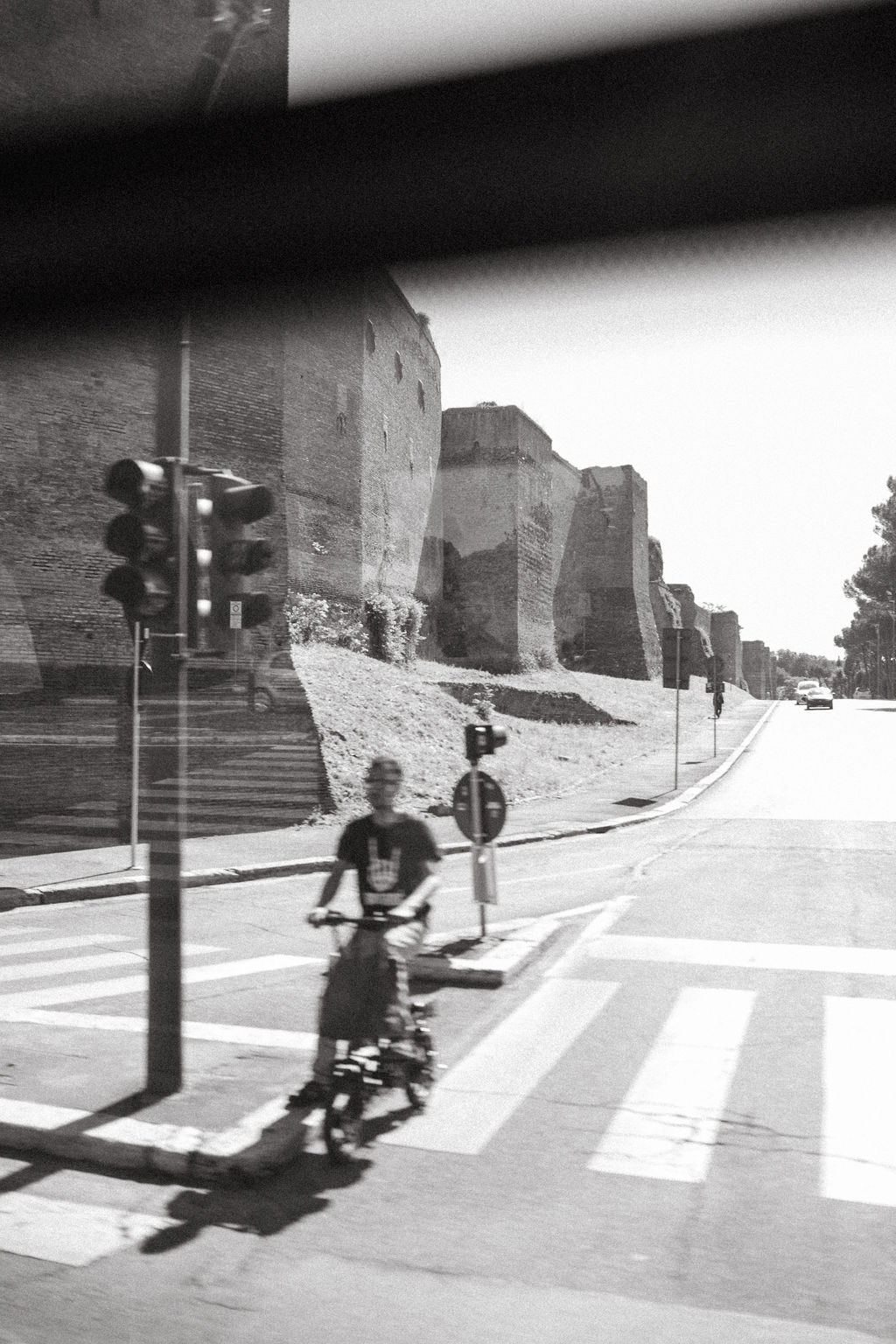
“Prossima fermata, Cerchi.” (“Next stop, Cerchi.”) If it was Saturday or Sunday, I would stop here for my weekly grocery haul from Mercato di Campagna Amica, a well-known farmer’s market organized by Coldiretti, but I press on.
The drive into the centro storico is like peeling away the layers of the city. You pass through the suburbs, a highway, posh neighborhoods, until arriving at the core: in this case, la Bocca della Verita. According to legend (and the beloved 1953 movie Roman Holiday), this marble mask would bite the hands of liars, lending the name “The Mouth of Truth.” I don’t stop to test the theory today.
Coming up is the Pietroselli stop, the transit hub where all other bus routes pass through and a fork in my road. From here, I can take to the city by foot and find my way to the Tiber in less than a few minutes. I choose to stay the (bus) course.
Past the Colosseum’s little brother, the Teatro di Marcelo, and rounding the corner, we reach the grandiose Cordonata Capitolina staircase that leads up to the Piazza Campidoglio, a hill-top square designed by Michelangelo during the 16th century. The bus hugs the corner, swinging right, and the Altare della Patria comes into view. This marble giant, colloquially known as “the wedding cake”, is both impressive and critiqued. Built in honor of King Emmanuel II—the first king of a (now) unified Italy—this national monument was inaugurated in Piazza Venezia in 1911 right up against the ancient Roman Forum. I’m glad I claimed my window seat so I have the perfect view.
Don’t let it distract you, however, from the beautiful chaos of the piazza, the central hub that connects Via del Corso and Via dei Fori Imperiali. And, in a fleeting moment, you have a straight-shot view of the Colosseum in the distance.
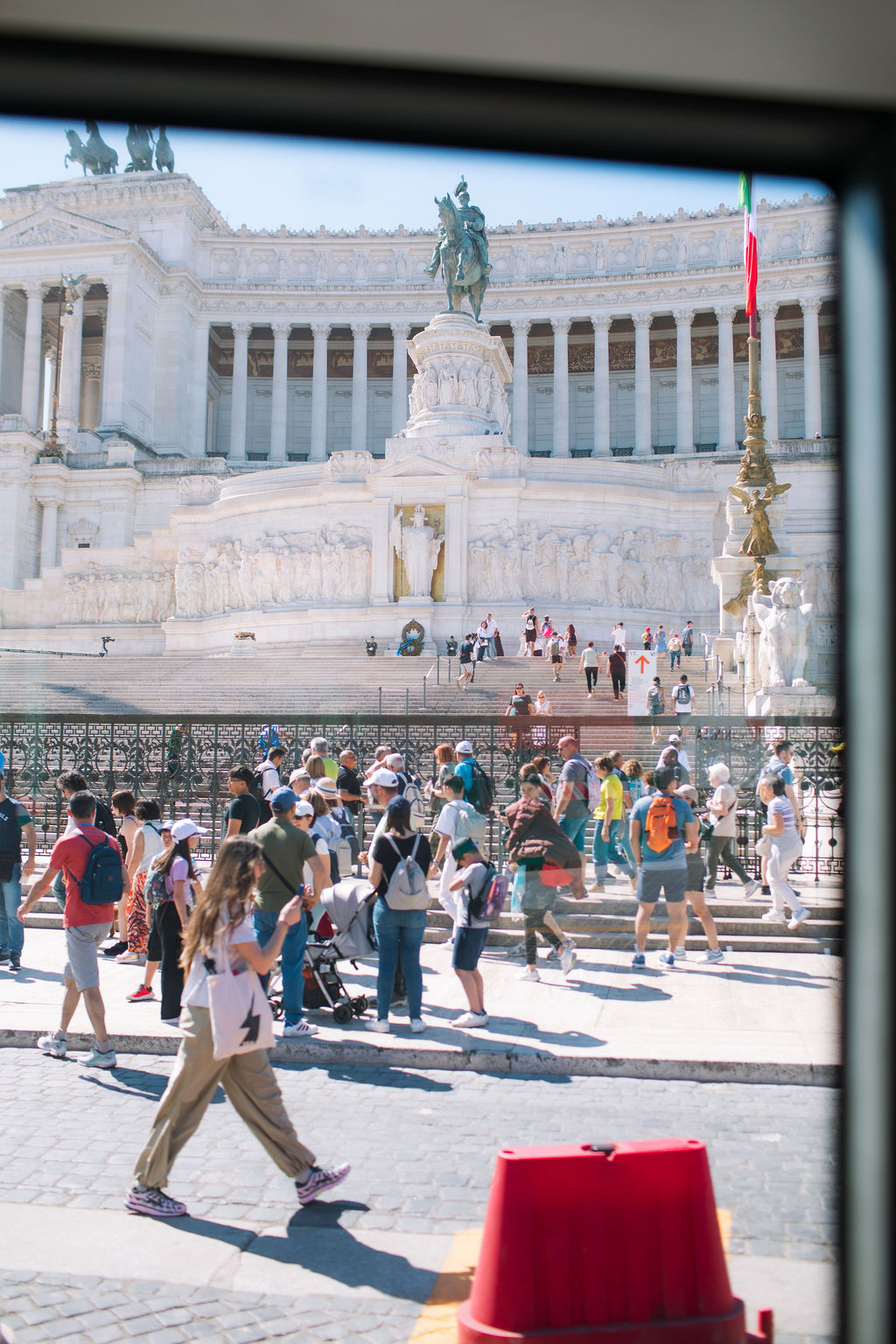
Piazza Venezia
The bus strolls along Rome’s ultimate shopping destination, Via del Corso, bookended by two of the most notable squares in Rome: Pizza Venezia and Piazza del Popolo. By now, tourists have entered the chat. I’m even more glad I snagged a seat 10 stops ago. I clutch my belongings and minimize my personal space, as passengers squeeze against each other like a jar of alici. The air is stuffy, and the ding of the fermata prenotata button rings in my ear.
We don’t quite reach Piazza del Popolo, as the bus turns the corner at the intersection of Palazzo Chigi and Zara: two very important Roman institutions. One a 16th-century palace and the official residence of the Italian Prime Minister, and the other home to the fast-fashion trends devoured by study abroad students and Italian teens alike.
Next, Piazza Barberini, home of two famous Bernini Fountains: Fontana del Tritone and Fontana delle Api (though these are probably best viewed after getting off).
By this time, the tourists have tapered off, and the bus feels almost as empty as when we first began. The backside of the Spanish Steps often marks the end of the list of tourist attractions on display, but to me, this is where real Rome begins.
We gain speed going up Via Vittorio Veneto. Outside the window, I am compelled by a familiar language, and a font that doesn’t match the rest of the city’s signage—it’s the Hard Rock Cafe, conveniently located across the street from the Embassy of the United States of America to Italy. To my right, the already bustling Harry’s Bar outpost, a staple of the ‘60s that was featured in Federico Fellini’s La Dolce Vita (1960). It’s only a five minute walk between a €21 bellini and a €21 double bacon cheeseburger with fries.
A bump in the road breaks my thoughts of fried food and peachy prosecco and transports me back to the present, somewhat ironically since we’re passing under the 5th-century arched Porta Pinciana. We roll up to San Paolo del Brasile, the last stop both for me and the bus, and the start of Villa Borghese, one of Rome’s largest public parks. These natural spaces have served Romans by offering refuge, shade, and protection since way before my air conditioned bus was designed.
I exit the bus, uttering a “grazie!” to the bus driver. The morning light shines through the canopy of trees, their leaves buffering the cacophony of the city; whenever I doubt my decision about moving to Rome, I look for answers among the Italian stone pines.
So, when people ask me “Where should I go in Rome?”, I tell them: buy a bus ticket. Take the scenic route.
